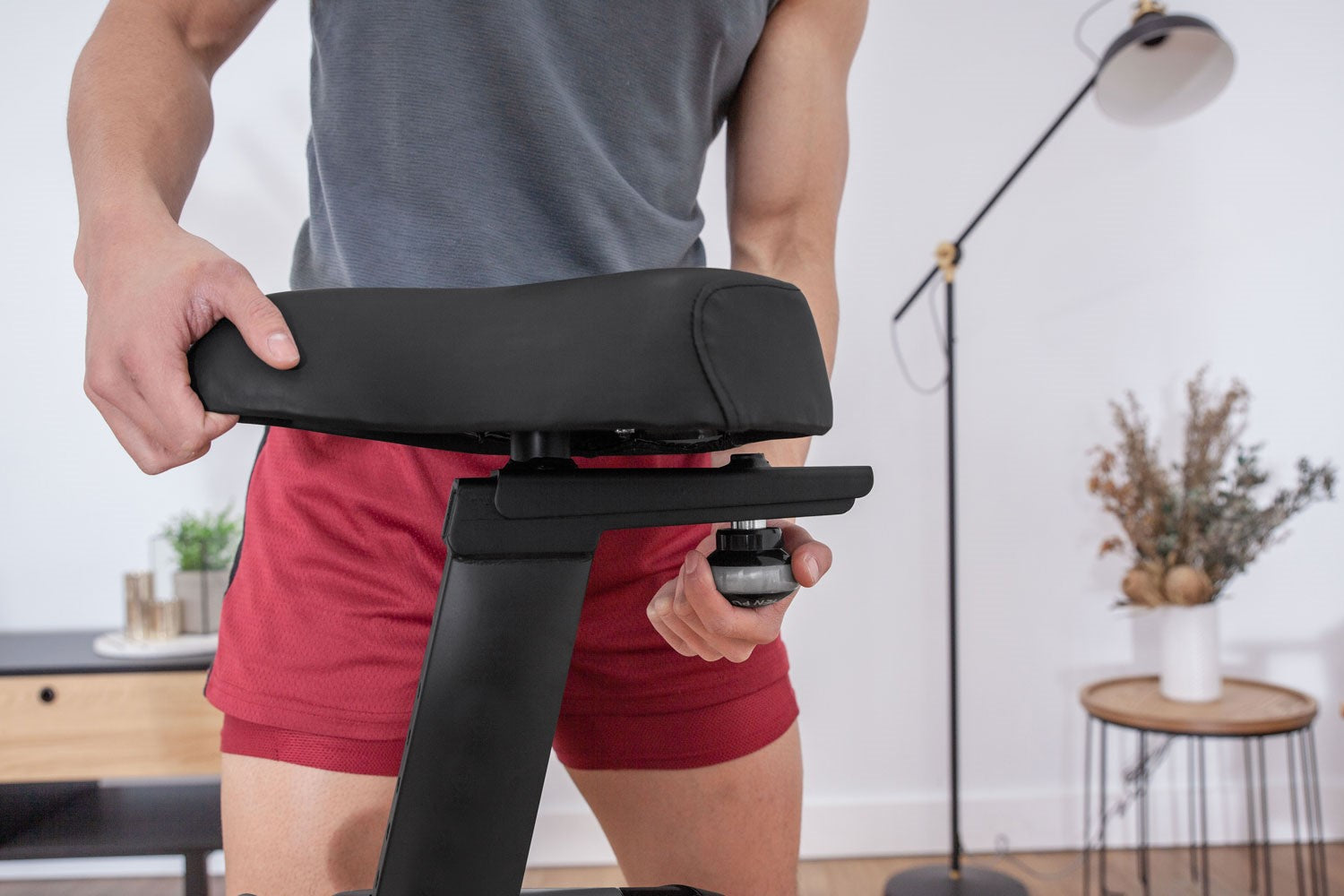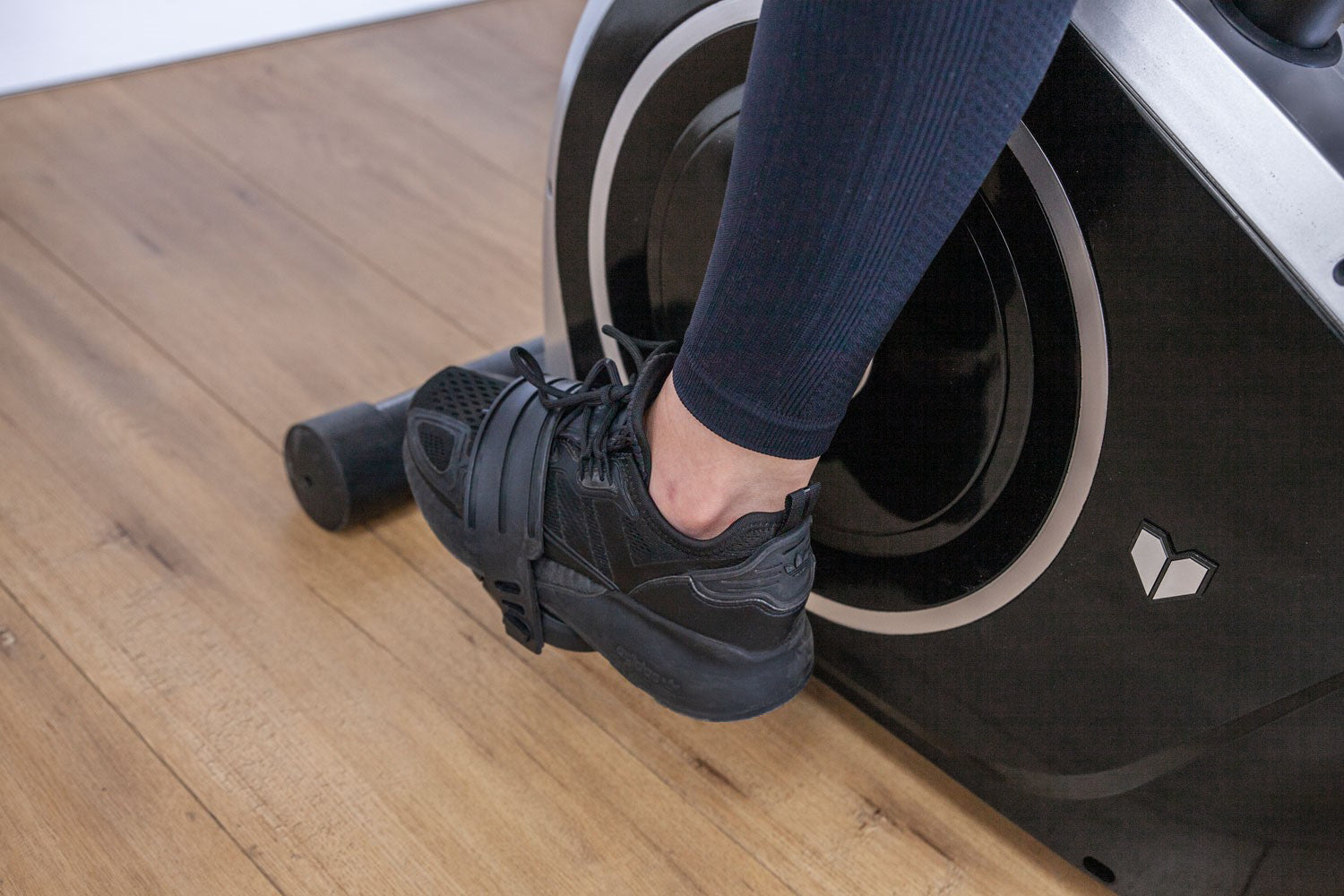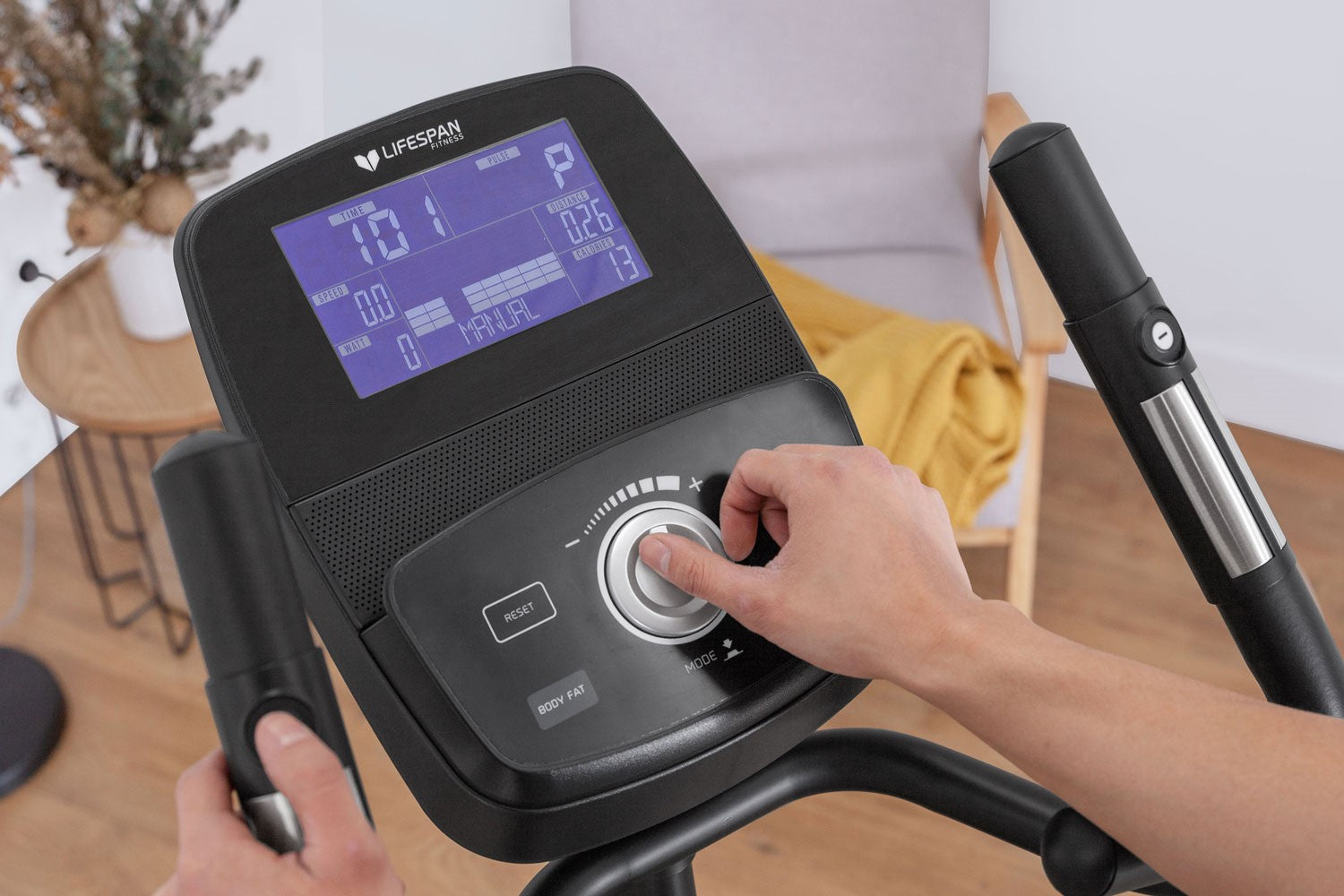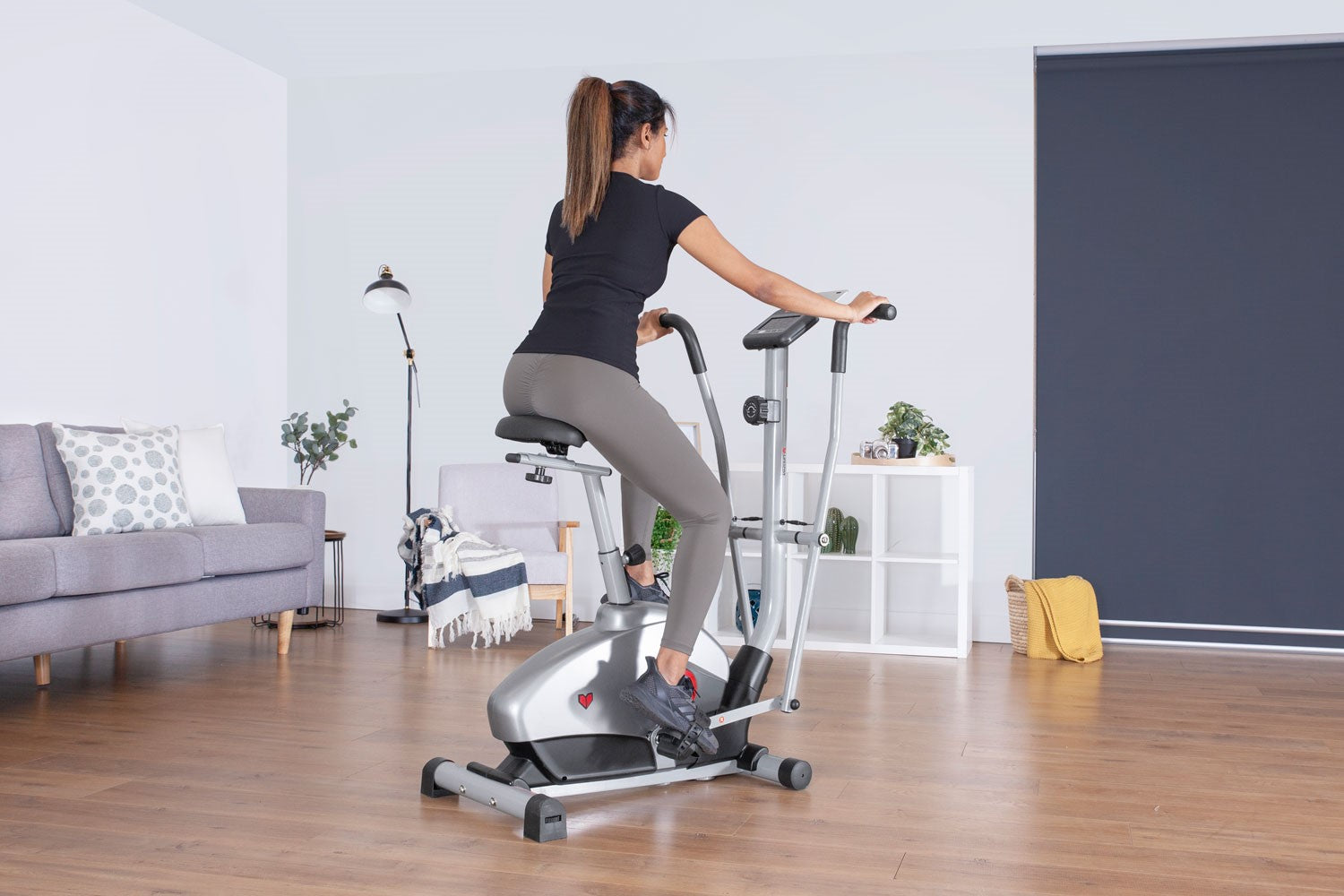

Exercise bikes are one of the most popular and effective ways of getting a great cardiovascular workout. They're highly accessible, and are easily modulated to the fitness level of the user. However, it's important take the time to learn how to set up your exercise bike correctly. Learning how to adjust your exercise bike to suit your specific needs is a crucial step in setting up for a great workout. Not only does it ensure your comfort while you train, it can help prevent the risk of injury, and ensure you're always getting the most out of your workout. While instructions may differ depending on whether you're using a spin bike, upright bike or recumbent, there are similar principles to be applied. Here we'll guide you through the key adjustments you need to make, including how to make the exercise bikes seat more comfortable, adjusting handlebars and pedals, and finding the optimal workout settings.

It all starts with a secure and comfortable base to support your workout. Here are some key steps for adjusting your seat correctly:
a. Start by standing next to the bike and adjusting the seat height. Ideally, your leg should still be slightly bent when the pedal is at the bottom position.
b. Next, adjust the horizontal position of the seat by moving it forward or backward. Ensure that your knees are directly above your feet when the pedal is at the frontmost position.
c. Fine-tune the angle of the seat. Some bikes allow you to tilt the seat slightly forward or backward. Experiment with different angles to find the most comfortable position for you.

Proper handlebar adjustment promotes good posture, reduces strain on your back and shoulders, and enhances your overall riding experience. Follow these guidelines for handlebar adjustment:
a. Stand beside the bike and adjust the handlebar height to a comfortable level. It should be roughly level with your saddle or slightly higher.
b. Consider the type of workout you need. If you're aiming for an intense, forward-leaning position, lower the handlebars slightly. For a more upright and relaxed position, raise them accordingly.
c. Ensure that the handlebars are positioned at a comfortable distance from your body, allowing a slight bend in your elbows when gripping them.

The proper adjustment of pedals is crucial to prevent discomfort and maintain efficient pedalling mechanics. Here's what you need to do:
a. Check the placement of your feet on the pedals. The ball of your foot should be positioned over the centre of the pedal.
b. Adjust the pedal straps or toe cages, if available, to securely hold your feet in place. Straps should be snug but not overly tight, allowing for easy foot movement and circulation.

Once you've set up a comfortable position for your exercise bike, it's time to hop on the machine and get riding. Depending on the bike you're using, you may have many different workout settings to choose from, such as resistance, incline or workout programs. Here's how you can make the most of them:
a. Familiarise yourself with the bike's resistance control mechanism, whether it's a dial, lever, or electronic display.
b. Start with a comfortable resistance level and gradually increase it as your fitness improves.
c. If your bike has an incline/decline feature like the SM710i or SM720i, adjust it to simulate different terrains and add variety to your workout. Gradually increase or decrease the incline to challenge yourself.
d. If available, explore your bike's range of workout programs. They can take you through automatic resistance or incline changes throughout your workout, and are a great way to get a consistent, hassle-free training session.

Taking the time to properly adjust your exercise bike before each workout session is essential for achieving maximum comfort, reducing the risk of injury, and optimising your performance. By adjusting the seat, handlebars, pedals, and workout settings according to your preferences and needs, you can create a personalised and effective exercise experience. Remember to refer to your bike's user manual for specific instructions on adjustment points, as different models may have slight variations. Check out our other blog post on our cycling training plan for beginners, to set you up for the perfect workout.
Remember, if you have any questions regarding our range of fitness bikes, or specific queries about your exercise bike, don't hesitate to reach out via phone or email, and a member of our friendly team will be happy to help you out.






















































